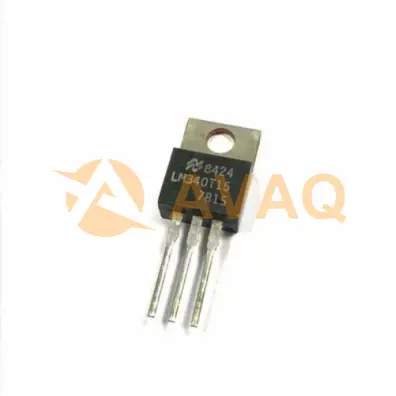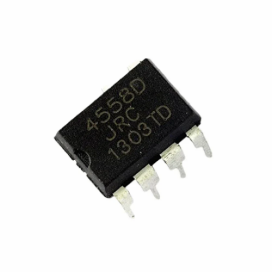-
Different Types of Integrated Circuit
09/05/2024 at 05:54 • 0 commentsIntegrated Circuits (ICs) have revolutionized the electronics industry by enabling the miniaturization of electronic devices and systems. From smartphones to medical devices, ICs are foundational to modern technology. This article will introduce what ICs are, explore several major types, and provide a summary along with answers to some common FAQs.
What is an Integrated Circuit?
An Integrated Circuit (IC) is a semiconductor device that consolidates multiple electronic components, such as transistors, resistors, and capacitors, into a single chip. These components are interconnected to perform specific functions within electronic systems. The development of ICs allowed for the miniaturization and increased efficiency of electronic devices, making them integral to modern technology.
![]()
Major Types of Integrated Circuits
1. Analog Integrated Circuits
Analog ICs process continuous signals, such as sound and light, rather than digital signals. They are used in a variety of applications including:
- Operational Amplifiers (Op-Amps): Used in signal amplification and filtering.
- Voltage Regulators: Maintain a consistent voltage level.
- Analog-to-Digital Converters (ADCs): Convert analog signals into digital data.
2. Digital Integrated Circuits
Digital ICs handle binary data (0s and 1s) and are fundamental to computing and digital communication. Key examples include:
- Microprocessors: The central processing units (CPUs) of computers, executing instructions and performing calculations.
- Memory ICs: Include RAM (Random Access Memory) and ROM (Read-Only Memory) used for data storage.
- Logic Gates: Basic building blocks for digital circuits, performing logical operations like AND, OR, and NOT.
3. Mixed-Signal Integrated Circuits
Mixed-signal ICs combine both analog and digital functions on a single chip. They are essential in applications where analog signals must be processed alongside digital data. Examples include:
- Analog-to-Digital Converters (ADCs): Convert analog signals to digital form for processing by digital systems.
- Digital-to-Analog Converters (DACs): Convert digital data into analog signals.
4. Radio-Frequency Integrated Circuits (RFICs)
RFICs are designed to handle high-frequency signals and are crucial for wireless communication. They are used in:
- Cellular Phones: For transmitting and receiving radio signals.
- Wireless Communication Devices: Such as Bluetooth and Wi-Fi modules.
5. Power Management ICs
Power Management ICs regulate and distribute power within electronic devices. They include:
- Voltage Regulators: Ensure stable voltage supply.
- Battery Management Systems: Optimize battery performance and longevity.
Summary
Integrated Circuits are pivotal in the electronics industry, providing the backbone for a wide range of applications from computing to communications. Understanding the different types of ICs—analog, digital, mixed-signal, RFICs, and power management—can help in selecting the right component for specific needs and applications.
Further Reading: https://www.avaq.com/technology/7-different-types-of-integrated-circuit-2023
Common FAQs
1. What is the difference between analog and digital ICs?
Analog ICs handle continuous signals and are used in tasks like signal amplification, while digital ICs process binary data and are used in computing and data storage.
2. Why are Mixed-Signal ICs important?
Mixed-Signal ICs integrate both analog and digital functions, allowing for efficient processing of signals that involve both types of data, such as in audio and communication devices.
3. What are some common applications of RFICs?
RFICs are commonly used in wireless communication devices, including mobile phones, Bluetooth devices, and Wi-Fi modules, where high-frequency signal processing is required.
4. How do Power Management ICs improve device performance?
Power Management ICs ensure that electronic devices receive a stable and appropriate power supply, optimize battery usage, and enhance overall device efficiency...
Read more » -
Understanding the IC 7815 Voltage Regulator
08/29/2024 at 02:32 • 0 commentsThe IC 7815 is a widely used voltage regulator in electronic circuits, designed to maintain a stable +15V output despite variations in the input voltage. As part of the 78xx series of voltage regulators, it plays a crucial role in ensuring that electronic components receive a consistent and reliable power supply. This article delves into the features, applications, and usage of the IC 7815, providing a comprehensive overview of this essential component.
![IC 7815]()
Key Features of the IC 7815
The IC 7815 is characterized by its ability to provide a fixed output voltage of +15V, making it ideal for circuits that require a stable power supply. Here are some of its key specifications:
- Output Voltage: The IC 7815 delivers a constant +15V output, which is crucial for powering sensitive electronic components.
- Input Voltage Range: To function correctly, the input voltage should be at least 17V and can go up to 35V.
- Output Current: This regulator can supply up to 1.5 amperes (1.5A) of current, making it suitable for various applications.
- Thermal and Short-Circuit Protection: The IC 7815 includes built-in protection features such as thermal overload and short-circuit current limiting, enhancing its reliability in different environments.
- Package Availability: It is available in multiple packages like TO-220, TO-3, and D2PAK, providing flexibility in its usage across different designs.
Applications of the IC 7815
The IC 7815 is a versatile component with a wide range of applications. Here are some common uses:
- Powering Microcontrollers and Sensors: The IC 7815 is frequently used in circuits that power microcontrollers and sensors, ensuring they receive a steady +15V supply.
- Current Limiting: It can act as a current limiter in applications where it is necessary to control or restrict the flow of current to prevent damage to other components.
- Voltage Stabilization in Audio Amplifiers: In audio circuits, the IC 7815 helps stabilize the voltage, leading to consistent and distortion-free audio output.
- Battery Charging Circuits: The regulator is often employed in battery charging circuits, maintaining a stable voltage output during the charging process.
- Industrial Automation Systems: In industrial settings, the IC 7815 is used to regulate the voltage supplied to control modules and sensors, ensuring their proper operation.
IC 7815 Equivalent Parts
In cases where the IC 7815 is unavailable or if an alternative is preferred, several equivalent parts can be used:
- LM340-15: A positive voltage regulator with similar output voltage and current specifications.
- LM7915: A negative voltage regulator offering -15V output, suitable for circuits requiring complementary voltage regulation.
- LM317: An adjustable voltage regulator that can be set to provide a +15V output with appropriate external components.
Practical Application: Power Supply Circuit with IC 7815
A practical use case of the IC 7815 involves its integration into a power supply circuit. This setup typically includes a MOSFET to regulate voltage, with the IC 7815 controlling the output to ensure a consistent +15V supply. Additional resistors and capacitors are used to stabilize the circuit and eliminate oscillations, especially at higher frequencies. This configuration is common in laboratory power supplies and industrial automation systems where precision and reliability are paramount.
Conclusion
The IC 7815 is a fundamental component in many electronic circuits, offering a reliable and stable +15V output. Its versatility and built-in protection features make it an essential choice for powering microcontrollers, sensors, and other sensitive components. By understanding its pin configuration, the role of capacitors, and potential equivalents, you can effectively incorporate the IC 7815 into a wide range of applications, ensuring your circuits operate smoothly and efficiently. Whether you’re working on an industrial automation system or a simple audio amplifier, the IC 7815 remains a go-to solution for fixed voltage...
Read more » -
JRC4558 vs TL072: What are Differences
11/28/2023 at 09:37 • 0 commentsWhat is JRC4558
The JRC4558 is a dual operational amplifier integrated circuit (IC) manufactured by Japan Radio Corporation (JRC), now part of New Japan Radio (NJR). It's a versatile component used in various electronic applications, particularly popular in guitar pedals and audio circuits.
![]()
Known for its robust performance, it offers strong input impedance, substantial voltage amplification (with a gain of up to 100dB), and operates within a wide power supply range (from ±4V to 18V). This IC contains two separate op-amps within its 8-pin package and is available in different formats such as DIP (Dual Inline Package) and SOP (Small Outline Package). Its flexibility and reliability have made it a favorite among engineers, hobbyists, and musicians for decades.
What is TL072
The TL072 is a popular dual low-noise JFET-input operational amplifier (op-amp) manufactured by Texas Instruments. It's part of the TL07x series known for its high input impedance, low noise, and wide bandwidth.
![]()
Main Differences between JRC4558 and TL072
- Technology:
- JRC4558: Utilizes bipolar technology.
- TL072: Uses JFET (junction field-effect transistor) technology.
- Input Impedance:
- JRC4558: Around 5MΩ.
- TL072: Higher due to JFET input technology, offering increased input impedance.
- Noise Performance:
- JRC4558: Moderate noise performance.
- TL072: Known for low noise, particularly suitable for audio applications requiring minimal interference.
- Voltage Noise:
- JRC4558: Moderate, around 18nV/√Hz.
- TL072: Low, also around 18nV/√Hz.
- Bandwidth:
- JRC4558: Moderate bandwidth, around 3MHz.
- TL072: Wide bandwidth, around 4MHz.
- Slew Rate:
- JRC4558: Slew rate around 1V/µs.
- TL072: Higher slew rate, approximately 13V/µs.
- Input Bias Current:
- JRC4558: Around 200nA.
- TL072: Very low, typically under 10pA due to JFET input.
- Input Offset Voltage:
- JRC4558: Around 1mV.
- TL072: Very low, typically under 3mV.
- Common-Mode Rejection Ratio (CMRR):
- JRC4558: Moderate.
- TL072: Typically higher.
- Power Consumption:
- JRC4558: Generally lower power consumption.
- TL072: Can vary in terms of power consumption.
- Voltage Range:
- JRC4558: ±4V to ±18V.
- TL072: ±3V to ±18V.
- Applications:
- JRC4558: Commonly used in guitar pedals, audio circuits, musical equipment.
- TL072: Often employed in audio equipment, precision circuits, and applications where low noise and high input impedance are crucial.
- Technology:
My Projects
My Pages
Projects I Like & Follow
Share this profile
ShareBits
Become a Hackaday.io Member
Create an account to leave a comment. Already have an account? Log In.




 Taiwo
Taiwo Liam Lacey
Liam Lacey lion mclionhead
lion mclionhead Mukesh Sankhla
Mukesh Sankhla Samuk
Samuk Dean Segovis
Dean Segovis Maakbaas
Maakbaas little french kev
little french kev Makerfabs
Makerfabs Sixth_Nassau
Sixth_Nassau hIOTron
hIOTron Patrick
Patrick John Rampelt
John Rampelt Lithium ION
Lithium ION ELSHNKHLL
ELSHNKHLL